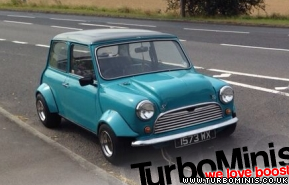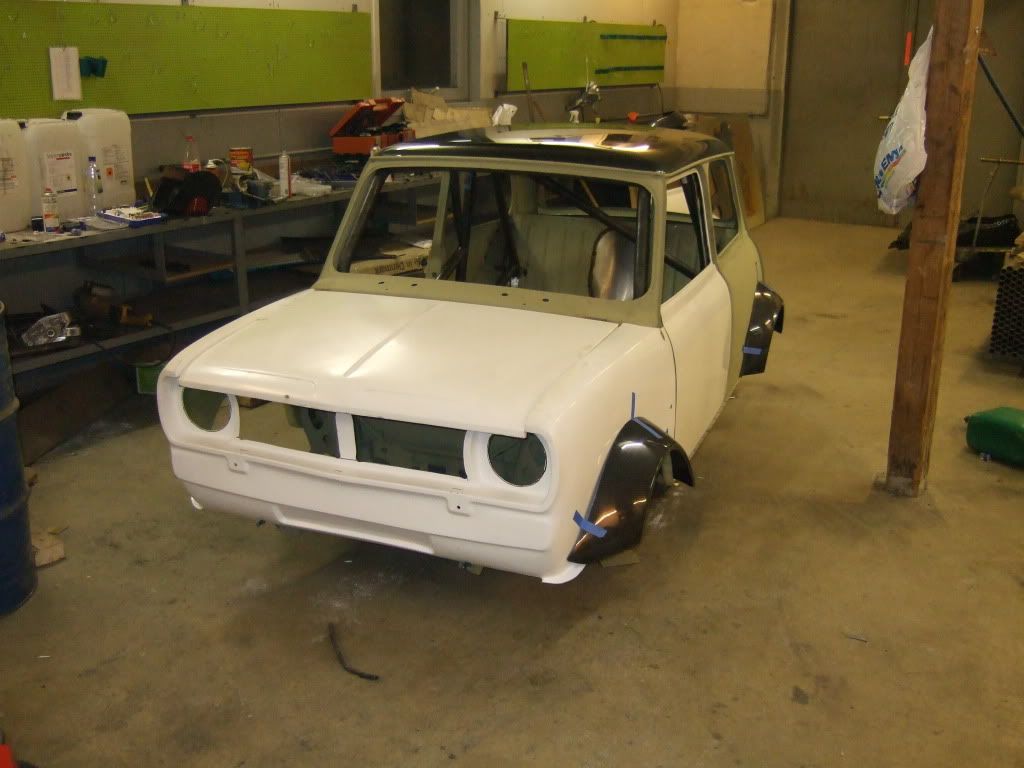| Page: |
| Home > Technical Chat > Srtaight Cut drops V Standard Helical ? | |||||||
 1424 Posts Member #: 2810 Formally spanner181187 Dublin, Ireland |
7th Oct, 2008 at 11:32:07pm
On 7th Oct, 2008 Mr Joshua said:
I think the MED solution is perfect by placing the bearing in the idler gear and mounting it on a spigot side thrust issues reduced considerably. But the MED roller kit is for straight cut drops, so no thrust anyway? On 12th Nov, 2009 Paul S said:
I think Gary OS has taken over my role as the forum smart arse  On 30th Apr, 2010 Rod S said:
Gary's description is best |
||||||
 6274 Posts Member #: 509 Post Whore Isle of Man |
7th Oct, 2008 at 11:34:23pm
my thoughts exactly? "Turbo's make torque, and torque makes fun"
|
||||||
|
2490 Posts Member #: 1954 Post Whore Luton Bedfordshire |
8th Oct, 2008 at 12:14:31am
On 7th Oct, 2008 spanner181187 said: apply the med idea to helical gears.
On 7th Oct, 2008 Mr Joshua said:
I think the MED solution is perfect by placing the bearing in the idler gear and mounting it on a spigot side thrust issues reduced considerably. But the MED roller kit is for straight cut drops, so no thrust anyway? Own the day
|
||||||
|
591 Posts Member #: 360 Stu from Corwall aka Mr Jazz Piano, Love_Machine, kneegrow |
8th Oct, 2008 at 12:24:37am
I thought the snag was that the side thrusts wore the thrust washers allowing the actual load to be unequally distributed on each bearing/shaft/teeth the whole thing then wearing and getting slack and noisy.
Bugger off, I'm getting there. |
||||||
 1424 Posts Member #: 2810 Formally spanner181187 Dublin, Ireland |
8th Oct, 2008 at 12:32:23am
On 8th Oct, 2008 Mr Joshua said:
apply the med idea to helical gears. I do like the sounds of that alright. Helical gears are alot more expensive to manufacture though, aren't they? Does this mean it wouldn't be financially viable for this system to be developed for the transverse A-series? On 12th Nov, 2009 Paul S said:
I think Gary OS has taken over my role as the forum smart arse  On 30th Apr, 2010 Rod S said:
Gary's description is best |
||||||
 1424 Posts Member #: 2810 Formally spanner181187 Dublin, Ireland |
8th Oct, 2008 at 12:35:47am
On 8th Oct, 2008 Hedgemonkey said:
I thought that ignoring the side thrusts, the only reason SC gears were better was the superior material. From a wear point of view, they are crap. That is my understanding aswell. I'm sure someone else will clarify/ humiliate us On 12th Nov, 2009 Paul S said:
I think Gary OS has taken over my role as the forum smart arse  On 30th Apr, 2010 Rod S said:
Gary's description is best |
||||||
 1346 Posts Member #: 2340 Post Whore Dublin Ireland |
8th Oct, 2008 at 01:29:11am
you could apply the MED idea in theory to the helical gears but you would still need some kind of thrust bearings as no matter what kind of bearing you have suporting the idle gear if it is helical then there will be a trust load, where as with S/C there's not. On 17th Feb, 2009 Rob H said:
I find the easiest way is to super glue the bolt to the end of one of my fingers. ______________________________________________________ |
||||||
 (2)[/url] by [url=https://www.flickr.com/photos/150672766@N03/]Rod Sugden[/url], on Fli) 5988 Posts Member #: 2024 Formally Retired Rural Suffolk |
8th Oct, 2008 at 08:46:04am
For the helical side thrust issue, I've been thinking about this as I actually don't want the noise from straights Schrödinger's cat - so which one am I ??? |
||||||
|
8604 Posts Member #: 573 Formerly Axel Podland |
8th Oct, 2008 at 09:02:30am
Rod,
Saul Bellow - "A great deal of intelligence can be invested in ignorance when the need for illusion is deep."
|
||||||
 6748 Posts Member #: 828 Post Whore uranus |
8th Oct, 2008 at 09:13:57am
paulH , i dont know if this helps , but its a bit data anyway ,
Edited by robert on 8th Oct, 2008. Medusa + injection = too much torque for the dyno ..https://youtu.be/qg5o0_tJxYM |
||||||
|
8604 Posts Member #: 573 Formerly Axel Podland |
8th Oct, 2008 at 09:30:57am
Robert,
Saul Bellow - "A great deal of intelligence can be invested in ignorance when the need for illusion is deep."
|
||||||
 6549 Posts Member #: 1149 #1 Basshunter Fan Force Racing ICT Dept Manager Miglia Turbo Am frum Yokshyer tha noes! |
8th Oct, 2008 at 09:49:39am
Sorry to hijack this thread. but my drop rattle? on tickover. Had it in gear, they just rattle a little, they are brand new and all the bearings were fine. Is this normal. 1/4 Mile 14.3secs 96Mph Terminal 10psi of boost.
|
||||||
 (2)[/url] by [url=https://www.flickr.com/photos/150672766@N03/]Rod Sugden[/url], on Fli) 5988 Posts Member #: 2024 Formally Retired Rural Suffolk |
8th Oct, 2008 at 09:56:33am
Paul (S), (and anyone else who's bored...)
Schrödinger's cat - so which one am I ??? |
||||||
 6748 Posts Member #: 828 Post Whore uranus |
8th Oct, 2008 at 10:07:29am
COULD YOU USE SHAR OF OIL FILM ?oops caps ,
Medusa + injection = too much torque for the dyno ..https://youtu.be/qg5o0_tJxYM |
||||||
|
1303 Posts Member #: 30 Post Whore Epsom, Surrey |
8th Oct, 2008 at 10:10:28am
i just have the timkin (sp) idler bearing |
||||||
 1346 Posts Member #: 2340 Post Whore Dublin Ireland |
8th Oct, 2008 at 10:18:33am
That’s Great stuff Rod S now we are really starting to get into the meat and potatoes of the thing,
On 17th Feb, 2009 Rob H said:
I find the easiest way is to super glue the bolt to the end of one of my fingers. ______________________________________________________ |
||||||
 1849 Posts Member #: 672 The oversills police Oslo, Norway |
8th Oct, 2008 at 10:28:28am
but would not the primary gear to idler gear create thrust forces in one direction, and the input gear to idler gear create thrust forces the other way around? |
||||||
 (2)[/url] by [url=https://www.flickr.com/photos/150672766@N03/]Rod Sugden[/url], on Fli) 5988 Posts Member #: 2024 Formally Retired Rural Suffolk |
8th Oct, 2008 at 10:29:30am
7000 series being the angular contct ball bearings....
Schrödinger's cat - so which one am I ??? |
||||||
 1346 Posts Member #: 2340 Post Whore Dublin Ireland |
8th Oct, 2008 at 10:39:59am
setting the preload would be a piece of piss simply assemble the hole lot on a gear box with out an engine block measure the gap between the gear face and the inner race and get shims to take this up and add the correct preload job done just like the diff bearings.
On 17th Feb, 2009 Rob H said:
I find the easiest way is to super glue the bolt to the end of one of my fingers. ______________________________________________________ |
||||||
|
8604 Posts Member #: 573 Formerly Axel Podland |
8th Oct, 2008 at 10:46:24am
My thoughts with the angular contact bearings would be to fix a shaft in place of the existing journal bearings and but a bearing each side of the idler outer ring. That way the preload could be set on the shaft before it is installed.
Saul Bellow - "A great deal of intelligence can be invested in ignorance when the need for illusion is deep."
|
||||||
 (2)[/url] by [url=https://www.flickr.com/photos/150672766@N03/]Rod Sugden[/url], on Fli) 5988 Posts Member #: 2024 Formally Retired Rural Suffolk |
8th Oct, 2008 at 10:51:32am
On 8th Oct, 2008 miniminor63 said:
but would not the primary gear to idler gear create thrust forces in one direction, and the input gear to idler gear create thrust forces the other way around? No, It's hard to get my head around but I "think" it's because the idler in the middle is rotating in the opposite direction to the other two. So primary pushes idler out (primary gets pushed in) but idler pushes gearbox input in (and hence gets pushed out itself). So the top and bottom are always loaded the opposite way to the middle one. But I'm going to go away and draw it out just to be sure... Schrödinger's cat - so which one am I ??? |
||||||
 (2)[/url] by [url=https://www.flickr.com/photos/150672766@N03/]Rod Sugden[/url], on Fli) 5988 Posts Member #: 2024 Formally Retired Rural Suffolk |
8th Oct, 2008 at 10:57:58am
On 8th Oct, 2008 PaulH said:
.....you could machine the gear to allow some more room but the gear is as hard as the hob of hell at this point because it is a thrust face and their is bugger all room on the gear box caceing for machining ? I was think of all machining being on the gear, ie, machining away the current thrust face and replacing the whole of the inner boss (down to shaft diameter) with a built up pack of needle roller parts. If it's too hard even for carbide tools, then use a toolpost grinder with a suitably profiled wheel, or anneal it, machine it and have it re-heat treated afterwards... Just thoughts at the moment. Schrödinger's cat - so which one am I ??? |
||||||
 6274 Posts Member #: 509 Post Whore Isle of Man |
8th Oct, 2008 at 11:02:32am
the way its been explained to me after mine went years ago is helical idlers will want to 'twist' if the thrusts get worn, which will take out the bearings in no time
"Turbo's make torque, and torque makes fun"
|
||||||
 6274 Posts Member #: 509 Post Whore Isle of Man |
8th Oct, 2008 at 11:21:01am
the med solution is ideal for sc spurs, but the old jkd system that used timken bearings would be better suited for side loadings
"Turbo's make torque, and torque makes fun"
|
||||||
 (2)[/url] by [url=https://www.flickr.com/photos/150672766@N03/]Rod Sugden[/url], on Fli) 5988 Posts Member #: 2024 Formally Retired Rural Suffolk |
8th Oct, 2008 at 11:54:33am
That part number took a bit of tracking down, it's an imperial series !!!
Schrödinger's cat - so which one am I ??? |
||||||
| Home > Technical Chat > Srtaight Cut drops V Standard Helical ? | |||||||
|
|||||||
| Page: |

